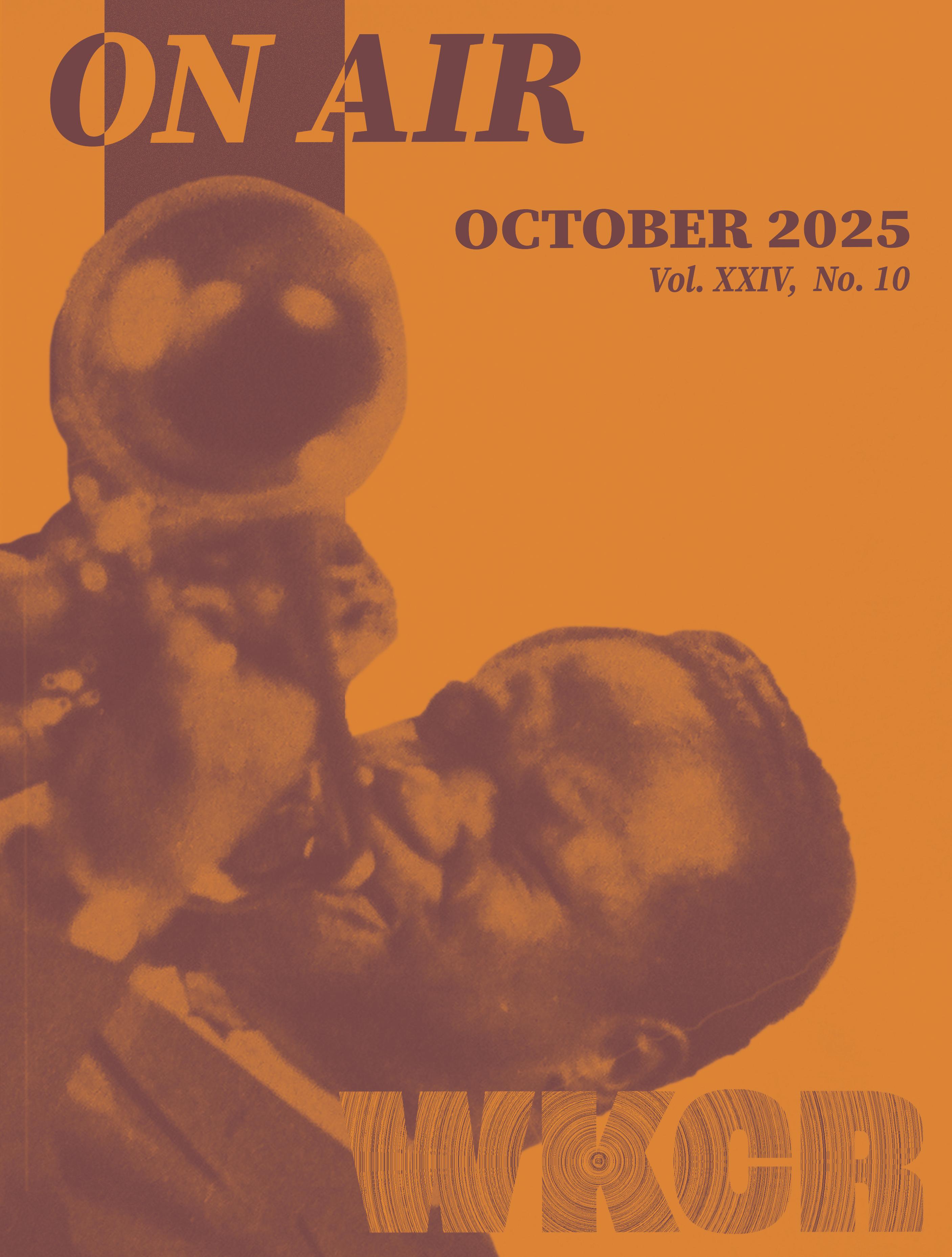

WKCR 89.9
Executive Board
Station Manager
Casey Lamb stationmanager@wkcr.org
Program Director
Rachel Smith programming@wkcr.org
Director of Operations
Teddy Wyche operations@wkcr.org
Student Life Director
Sara Carson studentlife@wkcr.org
Publicity Director
Ella Presiado publicity@wkcr.org
Business Manager
Solène Millsap business@wkcr.org
Department Directors
Jazz Emma Lacy & Hadassah Weinmartin jazz@wkcr.org
New Music
Phi Deng newmusic@wkcr.org
Classical
Charlie Kusiel King classical@wkcr.org
American Ben Rothman american@wkcr.org
In All Languages
Jayin Sihm ial@wkcr.org
Latin Damaris Lindsay latin@wkcr.org
News & Arts
Macy Hanzlik-Barend & Ian Pumphrey news@wkcr.org
Sports Mason Lau sports@wkcr.org
Dear Listeners, October will be a very busy month of programming! We'll be celebrating three great jazz birthdays–Thelonious Monk on the 10th, Pharoah Sanders on the 13th, and the incredible Clifford Brown on the 30th. We also have the continuation of a fantastic annual tradition here at WKCR: Ragas Live. We will be broadcasting the festival live from Pioneer Works in Brooklyn for 24 hours, from 7:00 pm on October 18th until 7:00 pm on the 19th. In addition, we’ll be celebrating the legendary Celia Cruz all month on Mambo Machine, and on the 22nd of the month, we will be celebrating the centennial of New Music.
Read in this month’s On Air Guide articles about recent concerts around New York, an album review of the alternative folk band Big Thief’s new album, a profile on the ambient musician Floating Points, and a great interview with our program director, Rachel Smith!
In other news, this month will be a celebration of WKCR’s own 84th birthday! Since our founding in 1941, we have been bringing you great alternative music with no commercials on the airwaves, and we are excited to continue to do so this month and for as long as we can. Thank you all for helping us get this far as a station. We are fully listener-funded and get by on the generosity of listeners like you. If you love our programming and want to support us, please consider contributing at WKCR.org. We are endlessly grateful for your support and thanks for listening. Enjoy this great month of programming!
Radio On,

Casey Lamb Station Manager
Cover design by McCartney Garb
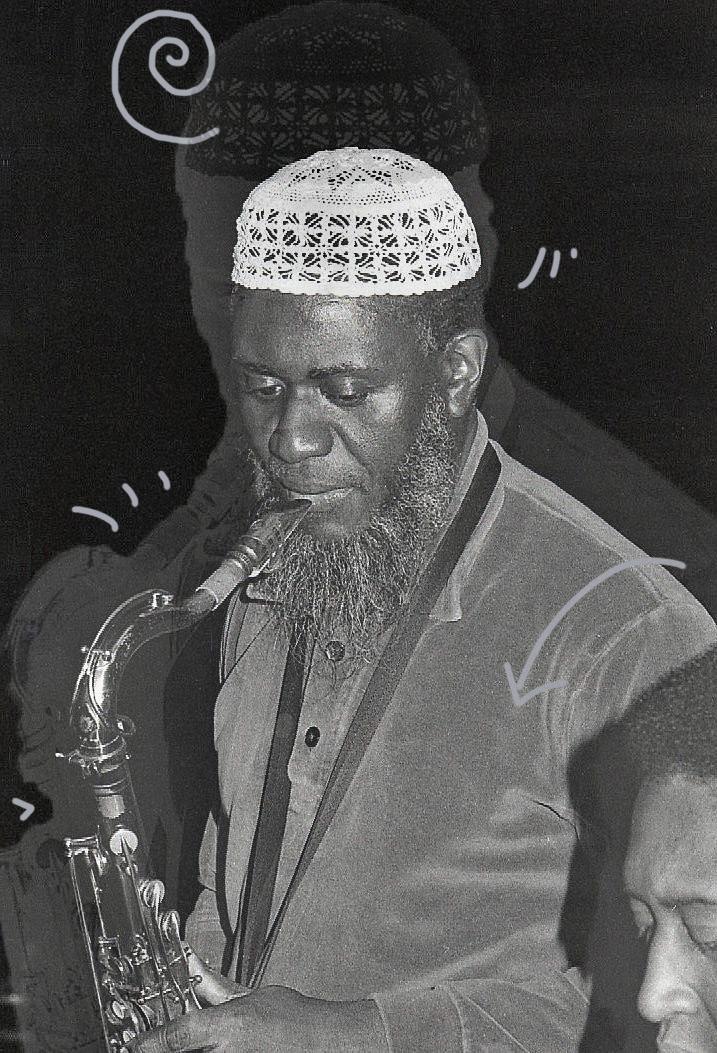
Pharoah Sanders collage by Ella Werstler
Dual Review: Mary Halvorson at Roulette and Sō Percussion at Le Poisson Rouge
by Casey Lamb
Amid the usual blur of September premieres, two concerts stood out.
At Roulette, Mary Halvorson’s sextet confirmed a new assurance, performing compositions from Halvorson’s new record About Ghosts. The exciting addition of saxophonists Brian Settles and Immanuel Wilkins to the ensemble was more than welcome. At Le Poisson Rouge, Sō Percussion marked a quarter-century with an intimate record release party for their new record 25x25. The album features over 800 minutes, 8 discs of music and all new compositions from the group as well as their friends and colleagues.
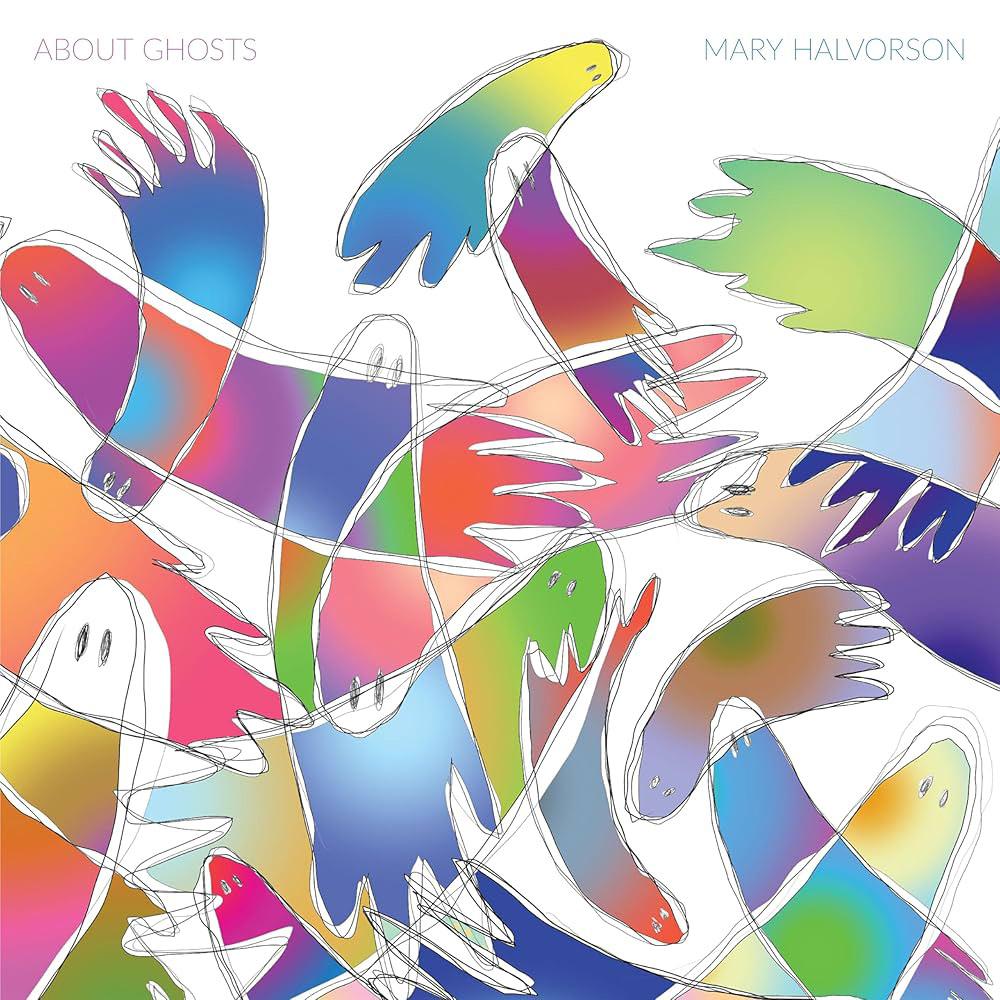
Halvorson at Roulette
Roulette, a historic Brooklyn venue for New York’s avant-garde scene, proved a fitting stage for Halvorson and the group. Halvorson,one of the most innovative composers in jazz today, writes compositions both illusory and noirlike. "Full of Neon" was the night’s highlight and the first composition which Settles and Wilkins joined the ensemble on. Patricia Brennan’s oneiric vibraphone playing was the driving factor and the rhythm section was particularly switched on, with Dunston’s bass playing particularly expressive and discerning and Fujiwara’s drumming both grounding and conversational. Halvorson, as always, took a fantastic solo.
The Amaryllis project has taken shape over several years, and here it felt the most cohesive it has yet sounded. The addition of Wilkins and Settles gave the group a broader palette, capable of shading between bright urgency and hushed introspection. The new sonic capabilities of adding the extra two horns allowed for moments of reference to Ellington (like on the title composition, "About Ghosts") and the great big bands of old. The effect was both rigorous and dreamlike; keep an eye out for both this ensemble and Halvorson as they remain on the cutting edge of new and experimental jazz.
About Ghosts
Album by Mary Halvorson
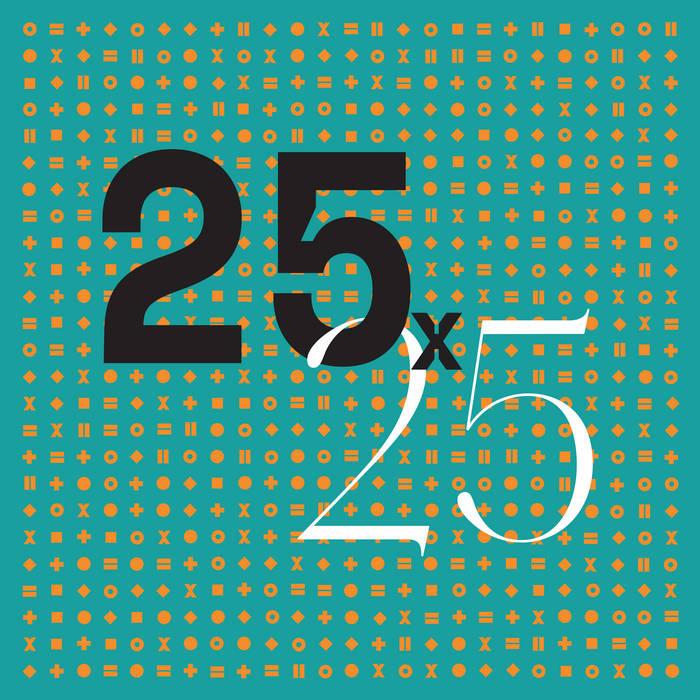
Sō Percussion at 25 at Le Poisson Rouge
Sō Percussion’s record-release on September 10 was as much a concert as a celebration of the group’s remarkable history. The quartet—Eric Cha-Beach, Josh Quillen, Adam Sliwinski, and Jason Treuting—marked their 25th year not with a gala but with a gathering at Le Poisson Rouge, the downtown venue where they first cut their teeth playing Steve Reich. The audience was heavy with composers, musicians, and industry friends, lending a warmness and community to their performance. They divided the night up into 4 sets consisting of new compositions written by their friends for the new record 25x25, finishing with recent classics from their collaborations with Caroline Shaw.
In typical Sō Percussion fashion the night saw a wide range of instruments from typical percussion to all four members of the quartet playing one piano (both inside and out), and even "playing" bowls of water in the end. The quartet premiered a new composition by Dan Trueman titled "Machines for Listening With
Sō". Written for the group earlier this year, it was especially striking. The piece sets up seemingly simple systems that, through exacting interlocks, generate unexpected rhythmic and textural sequences. In Sō Percussion’s hands, these layers came across with clarity and comfortability. The players balanced rigor with warmth, allowing the music’s mechanistic surface to yield heart and engross listeners in the sonic landscape of the piece. Heard in the small room that is Le Poisson Rouge, the work had a quiet intensity.
The group ended in classic fashion with Steve Reich’s "Clapping Music" as an encore. This drove home the connection between their beginnings and their present—25 years on, the spirit of Reich’s process pieces still animates their approach, but now refracted through a quarter-century of experimentation, collaboration, and friendship. Check out 25x25: it’s certainly worth a listen. Halvorson’s Roulette performance suggested an artist at the height of her powers, composing with assurance and leading a band that now feels fully formed. Sō Percussion’s anniversary gathering, by contrast, was less about proving anything than about affirming the deep bonds that have sustained them for twenty-five years. Both concerts made clear that the city’s experimental core is not only thriving but constantly renewing itself—whether through Halvorson’s restless invention or Sō’s enduring camaraderie.
Casey Lamb is the Station Manager at WKCR. You can listen to him program
The Tennessee Border Show on Sundays at 12PM by going to WKCR.org or by turning your FM dial to 89.9 FM New York.
25x25
Album by Sō Percussion
MEET A MEMBER
EFrom Humble Listener to Humble Leader: An Interview with Rachel Smith
by Emma Lacy
mma Lacy: Rachel, thank you so much for joining me this morning.
Rachel Smith: Oh, of course!
EL: Currently you are Program Director here at WKCR, but walk me through a brief history of the different roles you’ve played over your four years here.
RS: So, I started out as a programmer. My first show was Daybreak [Express], and then I became Jazz Director—I guess that was my sophomore year—and from there, I spent about a year as Jazz Director as a sophomore and junior. And then I had great ambitions, so I became Program Director. I love it; it’s my favorite.
EL: You mentioned Daybreak; tell us all the shows you’ve programmed regularly or on a whim across the years.
RS: Oh, yeah! So, I started out with Daybreak on Thursday. I did that for a year. Then, I moved to Out to Lunch on Thursday, where I’ve stayed put. I am also now doing Couleurs Antillaises, the French-Carribean show, every other Saturday morning. These are my regular shows and then I also just love to pick up free things—like, I programmed four shows this last week.
EL: Oh, wow! Love it. So, you joined ‘KCR your freshman year?
RS: Yeah, I got licensed in October, so I
literally came here, learned about ‘KCR, did the trainings, and started Daybreak.
EL: How did you learn about WKCR, and why did you join it as opposed to many other student groups at Columbia?
RS: Well, one thing is that I’m from New York, and the signal reaches my building. And actually, in the building where I grew up, the former In All Languages Department Director, DJ Charlie, also lived there. So, I heard about ‘KCR even before I got on campus. But then, I think just learning about the history of ‘KCR and the reach and impact it can have… I was totally sold. I was like, this is where I want to be.
EL: That is so wonderful. You’ve had a focus on jazz throughout your time here, as Jazz Director and as a regular jazz programmer. What draws you to jazz? Especially since other current and former Jazz Directors, like myself, Hadassah, and Stephen, are jazz musicians, so that’s our tie to jazz. But you’re not.
RS: That’s true!
EL: I’ve already asked you this before on the subway, but tell the people about your interest in jazz music.
RS: I will say that when I came to ‘KCR, I was not set on jazz. I didn’t know that was where I would be spending so much of my time. I will also say that I’m from New York, and my family church is St. Peter’s, the “jazz church.” Listeners will know that I’ve broadcast live
from St. Peter’s, and I’m actually going there this evening for the Al Foster memorial. So, the sounds of jazz were always around me, and I was always attracted to them, but it wasn’t really until I got to ‘KCR that I explicitly realized that there was this whole intellectual and artistic world you could enter with, like, research into jazz and groups. Of course I love the sounds of jazz, but I also love the history of it. I love the fact that people move in and out of groups, and change styles, and you can sort of track people and place them in your head on a scale of style or timeline. I love that ‘KCR leans into that intellectual, historical slant.
EL: Mm-hmm. And that, truly, outside New York, is not common across all jazz spaces, so I agree that ‘KCR is a great little niche for people who are into that angle of jazz, like you and me. Along the line of that history, as Program Director, you basically know everyone around here. Talk about some of the people you’ve met at ‘KCR, whether they’re fellow board members, fellow programmers, or alumni programmers, who have helped you find your way here.
RS: Wow, this is a good question! This is a hard one. The first person I have to say is Sid Gribetz. He has so much knowledge of jazz, and he is so generous with it. He is just always willing to talk to you about jazz or about how to approach a program, a Sunday Profile. He’s willing to share his past recordings, willing to teach out about the history of the music, which is super useful for anyone, but especially because I’m not a musician, I hadn’t had an educational foundation in music before Sid. I will admit that the first time I talked to him in person, I almost laughed, because I’d listened to him come out of my radio many, many times [Emma and Rachel laugh] before I saw him in the flesh! And hearing his voice come out of the person was a very surreal experience the first time. I mean, I listen to many ‘KCR shows regularly, and his is one of them, and he’s also a great
model in that way. Who else…? Ugh, this is so hard because the people here are wonderful and their passion, like, makes my heart whole. I will say another one, while we’re on the topic of alumni; another person who is a model to me is Mitch Goldman, with his Deep Focus [podcast]. He has a great sense of—and my listeners will know because I do a lot of interviews—how to make a guest comfortable and what to pull out of them. I’ve learned a lot of that from him. He also just, you know, exudes joy in the music, and I think he’s the model for going out and finding things people haven’t heard in our archives. It’s super exciting, and I really admire that he does that.
EL: Speaking of guests, who are some of your favorite people you’ve brought onto your shows, interviewed, invited to play live, etc.?
RS: [Laughs] These questions are too hard! The truth is that I have a really hard time choosing—who have been some of my favorites? Let’s see… I’m going to look at the list of who I’ve had, ‘cause I save almost every interview I do.
EL: Oh my gosh, yes, please look! I love that! How many do you think are on there?
RS: There’s upwards of fifty.
EL: [In Jazz-Director-admiration] Oh my gosh…
RS: Actually, I can do one without the list: Charles McPherson. That was a great interview, and he’s also just an incredible person. He’s so warm, and he speaks very eloquently about music, but also about life and vibration. That’s definitely one; I feel like that was a really good interview. Let’s see… this is not strictly jazz, but one of the earliest interviews I did was with John Densmore, who’s the drummer for The Doors, about his jazz and Indian classical influences. That was also very cool! I appreciated that. Who
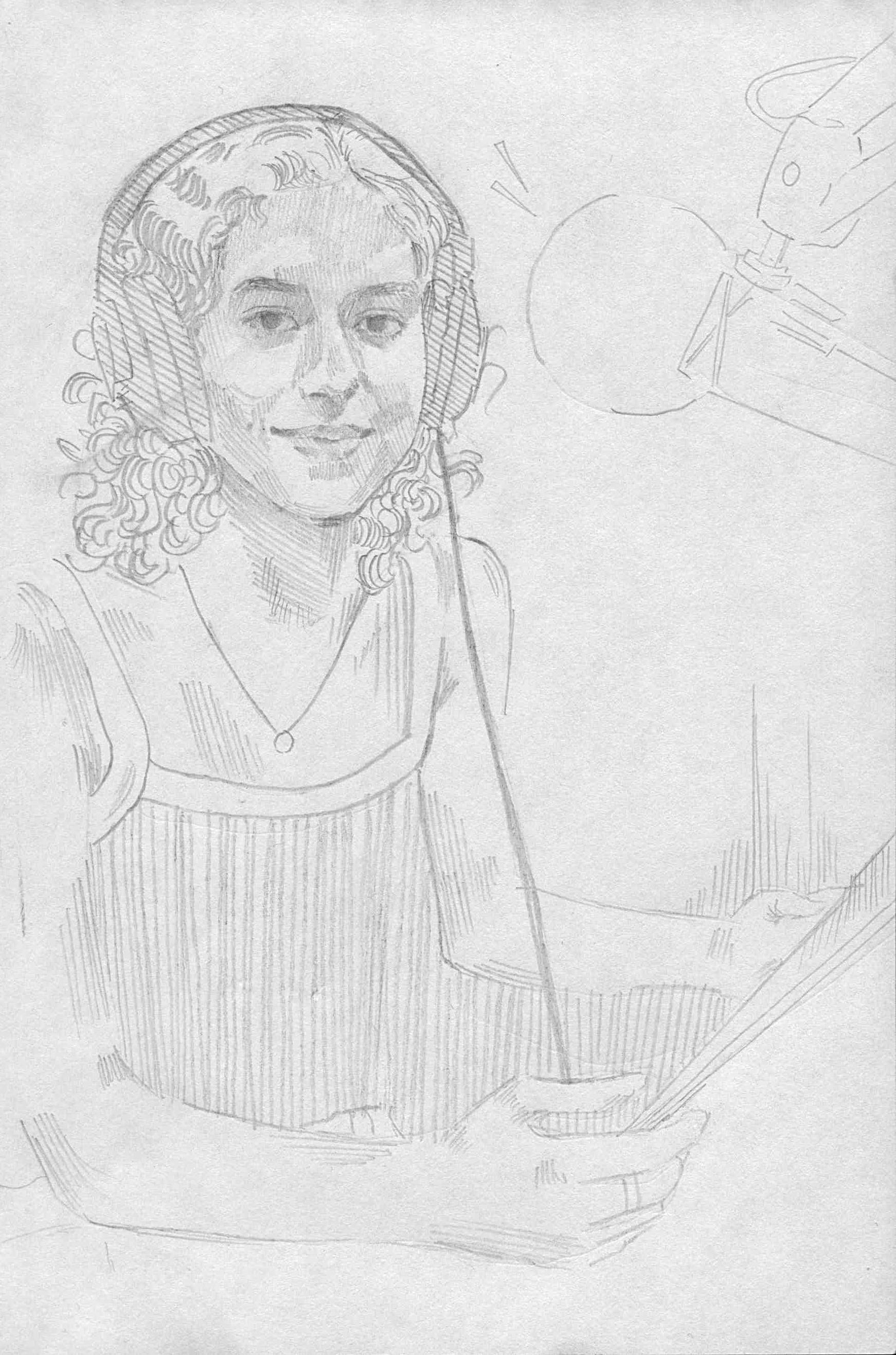
else I’ll say: the interview I did with Ron Carter was beautiful. He is another person who has so much knowledge. And something that I appreciate so much about all of my guests is that they treat me like an absolute professional one hundred percent of the time, without blinking at all. And I’m not, I’d say, like, your stereotypical jazz [interviewer]… not that there is one, but I’m more of an
unexpected jazz appreciator and interviewer than most, so especially for those who haven’t met me, the fact that they will just come in and immediately talk to me like a peer about the music—I appreciate it so much. It’s so wonderful to show me that respect and intimacy right off the bat. My favorite interviews I’ve done, that’s what makes them really great.
EL: Speaking of peers, something you and I have talked about a bit is how we both love answering the phone; we love when people call in on the listener line. What are your favorite or most memorable phone calls you’ve had with listeners?
RS: This isn’t a specific favorite call because there are so many calls like this, but one of my favorite ‘genres’ of listener calls is when I will play an artist and a listener will tell me about the time they saw that artist, and they’ll make me incredibly jealous because they’ll have paid a nickel [Emma and Rachel burst out laughing] to get a glass of water and sit at a bar for someone who I would literally kill to see, but cannot… so I do love those calls, even though they do make me feel as if I was born in the wrong era. It’s also really wonderful to hear people who are just enjoying the program, and they just want to say hello to me and that I’ve made their day a little bit better. I mean… there are two main reasons why I do this: one is for the music and
Rachel Smith
Portrait by McCartney Garb
one is for the listeners. Hearing that I brought a smile to their face or that I brought them back to another time, or that they’re dancing in their living room, makes my day.
EL: Especially since you were a listener once!
RS: Yeah! I’ll say, to me, it feels like a very intimate relationship. To me from this side, and also from the listeners’ side—I mean, I grew up listening to various radio stations. I remember when John Montone of 1010 WINS retired… I had a mini existential crisis. I was like, ‘what am I going to do!? He’s had breakfast with me for my whole life!’ So, I do feel like it’s a very intimate relationship.
EL: Yeah… oh, that’s wonderful. In addition to providing joy through music to listeners, what kind of legacy do you hope to leave at WKCR?
RS: One of the first things is to keep providing analog music. I almost never play digital music. Almost never. It sounds so good analog, and I also think there’s a certain romance to it. I also hope people continue to engage really deeply in the New York City jazz scene because it is so rich, and people have so many stories, and they’re just willing to talk to you when you’re excited to listen! So, I hope that people go out and do that and make a point of listening. I also hope for the same with our archives, [that people] don’t neglect them. There are wonderful stories—and not only stories, but also rare copies of 78s in there, live performances—there’s so much knowledge and treasure in there, just sitting there. That’s not what it’s meant to do.
EL: Absolutely. Final question: what impact has WKCR left on you from your freshman year to now as a senior?
RS: The first one has to be my blossoming love of jazz, I would say [laughs] to an abnormal extent… I mean, there’s also the practical element of knowledge, but there’s just this constant desire to learn more. Like, I will read
the liner notes on the back of a record, and I will discover that Cecil Taylor has poetry that I want to read, or I’ll get seven new record recommendations. Even when people call and give me record recommendations—I listen to all of them! So, I’m getting the knowledge and the love, but also this insatiable curiosity about the music. I also think, more generally, it has given me a lot of confidence and allowed me to connect with people who I wouldn’t have otherwise. I have learned that you should never be shy to ask for things, and the worst somebody can say is no, but if they say yes, you could have a really fabulous experience on your hands.
EL: Absolutely. Well, I do not want to believe that you’re a senior—
RS: Me too!
EL: —please stay at WKCR forever, please please please! You have been a defining factor in my experience at ‘KCR thus far. Thank you so much for all you have done for all of us; thank you for spending this morning with me. We love you; the listeners love you; thank you, Rachel Smith.
RS: Thank you!
Rachel Smith is the current Program Director and regularly programs Couleurs Antillaises every other Saturday and Out to Lunch every Thursday. Emma Lacy is a Jazz Department Director and a regular host of Out to Lunch every other Friday from 12 noon-3pm.
by Ben Rothman AMERICAN
“LOn Their New Album Double Infinity, Big Thief Finds Peace in the Psychedelic Wonder of the Present
et me be incomprehensible”—this is the first lyric from Big Thief’s vocalist Adrienne Lenker on their new album, her voice sounding battle-weary but strong amidst brain-tickling synths and pitterpattering drums. It’s ironic, then, that 2025’s Double Infinity is one of the Brooklyn indie-folk band’s most cohesive and thematically salient albums to date. Their previous record, 2022’s Dragon New Warm Mountain I Believe In You, boasted a tracklist of 20 songs and ran for 80 minutes. In contrast, Double Infinity comes in at 42 minutes with only 9 songs. One can feel a difference sonically as well: Dragon New Warm Mountain felt like Big Thief branching out to touch on the many different genres in their wheelhouse of folk, country, and rock. Double Infinity is far more restrained in its sound, with the band opting for consistently hazy,
psychedelic indie folk. A shorter and sweeter tracklist and transcendent sound allow Lenker, guitarist Buck Meek, and drummer James Krivchenia (plus collaborators) to craft brilliant songs about the nature of aging and love.
Part of Adrienne Lenker’s desire to be ‘Incomprehensible” no doubt comes from contemplating her own aging, which she confronts during many key lyrical moments on this record. On the opening track, she sings “The message spirals, ‘Don’t get saggy, don’t get grey’ / But the soft and lovely silvers are now falling on my shoulder.” Society may try to embed a dread of age, especially in women, but Lenker chooses to find beauty in it. She also remarks on her then-upcoming thirtythird birthday: “That doesn’t really matter next to eternity / But I like a double number, and I like an odd one too.” This symbolism seems to directly relate to the album’s title, with the word “double” extending the meaning of “eternity” or “infinity.” Dissecting the rest of the beautiful wordplay on “Incomprehensible” would take an article unto its own, so I’d like to point out how the song sounds both noisy and whimsical, with Lenker’s reverbsoaked vocals complementing Buck Meek’s warm electric notes.
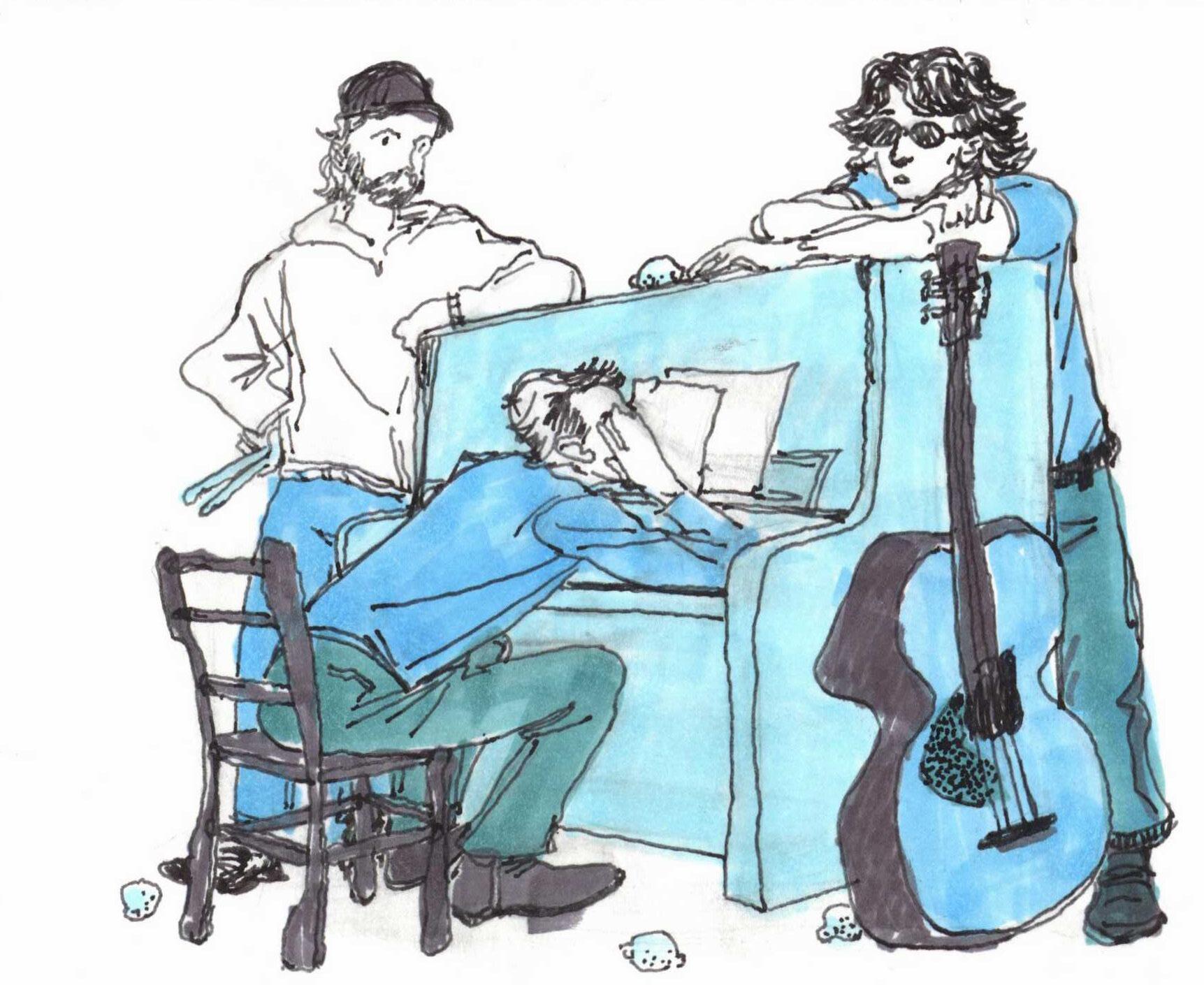
“Words,” the second track on the album, takes things up a notch with a more lively sound. Krivchenia strikes a busy but steady drumbeat over a far more pop-adjacent guitar riff. Lenker, Meek, and Krivchenia are in top musical form on Double Infinity, but the album would not be what it is without contributions from
Illustration by Jasper Dabbs
the other musicians the band invited into the studio, particularly jazz bassist Joshua Crumbly and vocalist Laraaji. Crumbly provides an easygoing sound, replacing the band’s former member Max Oleartchik, who left the group last year. Laraaji, an ambient musician known for collaborating with Brian Eno, has haunting vocals in the intro of “Words” (among other tracks) which serve almost as percussion, and he gets a full vocal feature on “Grandmother.”
On “Los Angeles,” Lenker’s lyricism veers toward the topic of love. In an Instagram caption, Lenker and Buck Meek wrote that the song is “a testament to enduring love… which lasts through many forms and boils down till becoming unbreakable.” One might find this reminiscent of Lenker’s incredible 2024 solo album Bright Future, where she examined love in the face of seasons and climates changing. However, she sounds more hopeful here, professing “You call, we come together / Even without speaking.” Gospel-like background vocals lent by Meek, Alena Spanger, Hannah Cohen, and June McDoom support the communal nature of these lyrics, especially on the chorus (“You sang for me.”)
The following song, “All Night All Day” is more upbeat and blends romance with sexual innuendo, still keeping the theme of connection between people. The line “Love is just a name / It’s a thing we say / For what pulls through / ‘Til we come together” paints love as such an ethereal concept that even the word ‘love’ itself does not fully describe it. Krivchenia’s drumbeat is also one of the most fun patterns on the album.
The more relaxed title track “Double Infinity” arrives halfway through the album and returns to ruminations on aging. Lenker sings “The wildflowers sway with ease / At the bridge of two infinities / What’s been lost and what lies waiting.” Stuck between the future and the past, she finds a soothing natural equilibrium in the present.
A pair of tracks on the back half of Double Infinity are far more repetitive lyrically and come off more like mantras than songs. The first of these is the jazzy “No Fear,” which
begins at a creeping tempo with a soul-moving bassline from Crumbly. Lenker makes direct reference to the album cover (a shimmering lime surrounded by rings of lime skin) with the line “There is no time / Round like a lime / Destiny.” The track is overall about shedding emotions in the face of existential dread. On the punchy and even more repetitive “Happy With You,” she sings “Happy with you / Why do I need to explain myself?” Perhaps with her aforementioned fear shed, Lenker feels more secure in expressing her love.
“No Fear” and “Happy With You” bookend the song “Grandmother,” featuring Laraaji, a six-minute opus that is an instant career highlight for Big Thief and my personal favorite track on the album. It provides an answer to the question of what to do with the time one has left, if the past and future really are infinite voids: “Gonna turn it all into rock ‘n’ roll.” This chorus, sung beautifully by Lenker as Laraaji vocalizes with her, comes like a wave crashing onto a shore of psychedelic folk instrumentation. No electric guitar needed; Big Thief brings you rock ‘n’ roll energy in a folk song.
The band closes out Double Infinity with the love song “How Could I Have Known,” which, like much of the album, places love in the fourth dimension amongst the past and present. The final lyric is arguably a paradox: “I was alone in that moment / When I first met you.” Lenker describes herself as being alone, but at a time when she was also with her partner, something that the incomprehensibility of time allows. On their wonderfully psychedelic new record, Big Thief wants us to let them be incomprehensible. In acknowledging the dread of time passing, we might find even more joy in the present moment.
Ben Rothman is the American Department Director and regular programmer of Hobo’s Lullaby on Saturdays from 4PM to 6PM.
am
am
Sin Fronteras
Jazz Alternatives
Nueva Canción
Som do
Special Broadcasts
SPECIAL BROADCASTS
Thelonious Monk Birthday Broadcast
Friday, October 10, all day
Universally recognized as one of the greats, Thelonious Monk was a gifted musician and composer. He played with an “eccentric” style entirely his own; his tunes like “‘Round Midnight,” “Ruby, My Dear” and “In Walked Bud” have become jazz standards. Monk’s early recordings are intertwined with the early history of WKCR: in 1941, Jerry Newman recorded Monk while he was in the house band at Minton’s Playhouse for airplay on WKCR.
Pharoah Sanders Birthday Broadcast
Monday, October 13, during jazz programs
Last month, we celebrated the father: John Coltrane. Back in August, we celebrated the holy ghost: Albert Ayler. This month, we celebrate the son: Pharoah Sanders. This connection, made by Coltrane and relayed in the liner notes to Ayler’s Love Cry, is one of innovation and genius. On his birthday, we will feature exclusively Sanders’s music on our three jazz programs: Daybreak Express (5-8:30 AM), Out to Lunch (12-3 PM), and Jazz Alternatives (6-9 PM).
Homecoming:
Columbia Lions v. UPenn Quakers
Saturday, October 18, 1:30 PM until end of game WKCR Sports is back with live coverage of the Columbia University Homecoming game between the Columbia Lions and the University of Pennsylvania Quakers.
Ragas Live
Saturday, October 18, 7 PM to Sunday, October 19, 7 PM
Started at WKCR in 2012, Ragas Live dedicates 24 hours to the raga tradition. The event takes
place live at Pioneer Works; WKCR broadcasts the audio from on-site in real time. Listeners can look forward to live sets and interviews from leading raga musicians. More information and lineup is available at ragaslive.com.
New Music Centennial Celebration
Wednesday, October 22, all day
This year marks one hundred years since the first concert of Henry Cowell’s New Music Society, a key moment in the genesis of “new music.” WKCR presents a comprehensive look at new music since its inception, with themed slots that take you through the progression of the genre, from Cowell to Bartók, Glass, Cage, Braxton, and through the present day.
Clifford Brown Birthday Broadcast
Thursday, October 30, all day
As we always do, we celebrate Clifford Brown’s birthday on October 30. Brownie set the bar high for individual musicians and for small groups, as the Clifford Brown-Max Roach Quintet is known as one of the most successful collaborations in jazz. We are honored to celebrate a trumpeter and artist taken from us too soon.
Celia Cruz Centennial Celebration all month
Born in Cuba, Celia Cruz spent her early career singing guarachas but is today best known as a salsa singer. Her renditions of songs like “Bembe colorá” and “Guantanamera” are instantly recognizable, as is her catchphrase “¡Azúcar!”. In honor of the Queen of Salsa’s Centennial, every Mambo Machine program for the entire month will play exclusively her music.
THEMED SHOWS
SUNDAY PROFILES
Sundays 2:00-7:00 PM
Yusef Lateef
October 5, 2:00-7:00PM
Host: Francisco Reyes, Alma Avgar
A true visionary, Yusef Lateef saw music without boundaries. He called his own music “autophysiopsychic” because it came from his physical, mental, and spiritual self. Indeed his style reflects this: Lateef features non-traditional and non-Western elements and instruments in his recordings.
TBD
October 12, 2:00-7:00PM
Host: Sid Gribitz
WKCR’s iconic Sunday Profile host, Sid Gribetz, returns with a five-hour broadcast diving into the life and work of a jazz great.
Floating Points (Samuel Shepherd)
October 26, 2:00-7:00PM
Host: Charlie Kusiel King
A trained classical pianist with a Ph.D. in neuroscience, Samuel Shepherd (known as Floating Points) principally composes electronic music, which varies from ambient to techno. This Sunday Profile will feature as its centerpiece Shepherd’s 2021 release Promises, an eight movement work for synthesizers, orchestra and saxophone, which was recorded by Shepherd, the London Symphony Orchestra, and Pharoah Sanders.
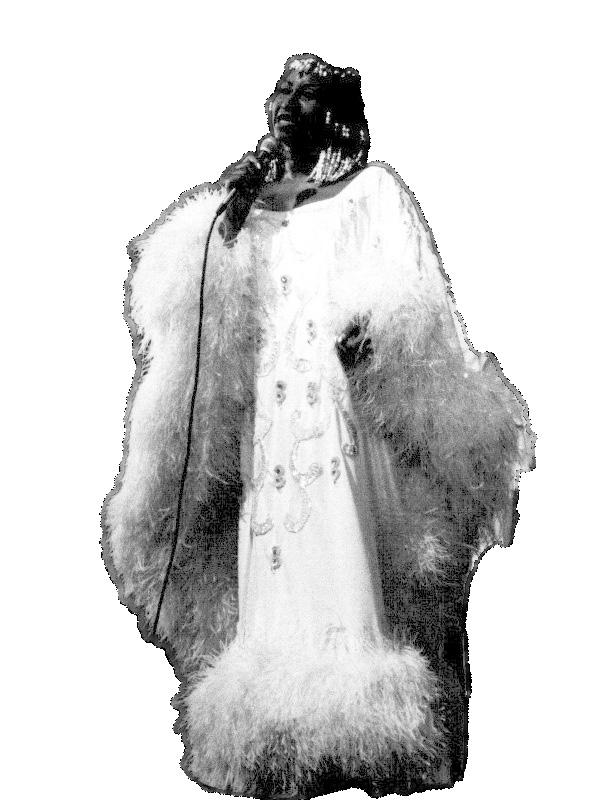
Photograph of Celia Cruz by Lionel Decoster
Show Listings
JAZZ
Daybreak Express, Mon.-Fri. 5-8:20am
Out to Lunch, Mon./Tues./Thurs./Fri. 12-3pm
Jazz Alternatives, Mon.-Fri. 6-9pm
The core of our jazz offerings, these three programs span the entire range of recorded jazz: everything from New Orleans jazz, jazz age, swing era, bebop, hard-bop, modal, free, and avant-garde. Hosts rotate daily, offering an exciting variety of approaches, some of which include thematic presentation, artist interviews, or artist profiles.
On the first Wednesday of every month, Jazz Alternatives becomes “The Musician’s Show” and is hosted by a professional working musician.
Birdflight, Tues.-Thurs. 8:20-9:30am
Archival programs from the late Phil Schaap, one of the world’s leading jazz historians, producers, and an NEA Jazz Master, who hosted this daily forum on the music of Charlie Parker for about 40 years.
Now's The Time*, Fri. 8:20-9:30am
The newest show from WKCR Jazz is dedicated to jazz as a living art form and features the music of young, upand-coming musicians pushing the genre forward.
Traditions in Swing, Sat. 6-9pm
Archival programs from the late Phil Schaap. This awardwinning Saturday night staple presents focused thematic programs on jazz until World War II. Schaap presents the music, much of it incredibly rare, from the best sound source—often the original 78 issue.
Phil Lives*, Mon. 3-5am
Selections of archival programs from late Phil Schaap. This show features interviews, tributes, and portions of longform programs.
Jazz ‘til Dawn, Sun. 4-6 AM
An early Sunday morning jazz program, limitless in era and style.
CLASSICAL
Cereal Music, Mon.-Thurs. 9:30am-12pm
An entirely open-ended classical show to start your weekdays.
The Early Music Show, Fri. 9:30am-12pm
Dedicated primarily to European medieval, Renaissance, and baroque music before c. 1800.
Extended Technique*, Wed. & Thurs. 3-6pm
WKCR’s first interdepartmental show (in the New Music and Classical departments) dedicated to contemporary classical music. Under the direction of the New Music and Classical departments, this program is dedicated to experimental classical music.
Afternoon Classical, Fri. 3-6pm.
Two hours of unrestricted classical music selections followed by one hour dedicated entirely to the music of J.S. Bach.
Saturday Night at the Opera, Sat. 9pm-12:30am.
One of NYC’s longest running opera shows, Saturday Night at the Opera features one opera in its entirety, with time for history and commentary, each week.
NEW MUSIC
Afternoon New Music, Mon. & Tues. 3-6pm
Our daytime new music program features a wide variety of music that challenges boundaries and subverts categorizations. Shows include everything from seminal new music compositions to the most challenging of obscure deep cuts and new releases.
Transfigured Night, Tues./Thurs. 1-5am and Sat. 2-6am
Our overnight explorations into the world of new music, Transfigured Night rewards our late night listeners with a wide range of sounds and experimental music.
Workaround*, Fri. 9-10pm
WKCR presents live sets from local professional and student DJs.
Live Constructions, Sun. 10-11pm
This weekly program features a live in-studio performance or a previous performance recorded at WKCR.
* Indicates show was created after January 2022
LISTINGS FOR LISTENERS
Honky Tonkin’, Tues. 10-11pm
One of WKCR’s longest-running American music programs, Honky Tonkin’ focuses on country music from the 1930s through the 1950s.
Tuesday’s Just as Bad, Tues. 11:30pm - Wed. 1am
For the first hour, Tuesday’s Just as Bad explores the world of blues prior to World War II. In the final half hour, hosts turn to the post-war years.
Night Train, Wed. 1-5am
All aboard! One of two overnight programs in the American Department, Night Train rolls through the post-war R&B and soul tradition, from the genre’s emergence in the 1940s and ‘50s through the funk revolution in the ‘70s. Shows often feature extended live recordings and concerts.
Offbeat, Fri. 1-5am
Offbeat exposes undiscovered, underplayed, or up-andcoming new hip hop artists, including experimental instrumental artists not typically played on mainstream hip hop radio.
Across 110th Street, Sat. 12-2pm
Across 110th Street airs soul, funk, and dance music from the 1960s through the ‘80s and ‘90s.
Something Inside of Me, Sat. 2-4pm
WKCR’s Saturday afternoon blues show, Something Inside of Me focuses on electric and post-war styles.
Hobo’s Lullaby, Sat. 4-6pm
Rooted in the folk revival of the 1950s and ‘60s, Hobo’s Lullaby airs American folk and traditional music styles from the early 20th century through the present day. Shows feature old staples like Leadbelly, Elizabeth Cotton, and Woody Guthrie through contemporary stalwarts like the Carolina Chocolate Drops.
Notes from the Underground, Sun. 12:30-2am
Notes from the Underground showcases contemporary hip hop and rap music with an emphasis on emerging and experimental artists. The program also hosts local and visiting artists for interviews, freestyles, and guest curation.
Amazing Grace, Sun. 8-10am
Greeting listeners on Sunday morning, Amazing Grace shares the African-American gospel tradition.
The Moonshine Show, Sun. 10am-12pm
On the air for nearly 60 years, The Moonshine Show showcases the American Bluegrass tradition, from the earliest roots in vernacular string-band music, the genre’s pioneers in the 1940s and 50s and advancements in the 60s and 70s, through the leading innovators of today.
The Tennessee Border Show, Sun. 12-2pm
The Tennessee Border Show highlights the singersongwriter tradition, from Hank Williams and Townes Van Zandt to Lucinda Williams.
LATIN
Caribe Latino, Mon. 10pm-12am
Caribe Latino features the diverse, upbeat music from Latin communities in the Caribbean. Popular Latin rhythms such as Salsa, Merengue, Bachata and Latin Jazz take center stage throughout the program.
Urbano Latinx, Tues. 12-1am
From salsa and merengue to Latin punk rock, Urbano Latinx airs contemporary sounds from Latin America, the Caribbean, and the diaspora.
Sin Fronteras*, Wed. 12-3pm
Occupying the time slot of Out to Lunch on Wednesday afternoons, Sin Fronteras explores the tremendous and growing tradition of Latin Jazz.
Nueva Canción, Wed. 10-11pm
Nueva Canción explores protest music created throughout Latin America during the 1960s and ‘70s, on its own and in the context of protest music from other countries and during time periods.
Som do Brasil, Wed. 11pm - Thurs. 1am
From samba and bossa nova to MPB, Som do Brazil features the enchanting sounds and rhythms of Brazil.
Sonidos Colombianos, Fri. 10-11pm
Sonidos Colombianos presents music from Colombia. The bilingual musical tour includes not only cumbia, but also the guitar-based bambuco from the Andean region, the harp llanero music from the Eastern Plains, the marimba-infused currulao from the Pacific Region, and the accordion-driven vallenato of the North Atlantic Coast.
* indicates show was created after January 2022
LISTINGS FOR LISTENERS
The Mambo Machine, Fri. 11pm - Sat. 2am
The Mambo Machine is the longest running salsa show in New York City. The program plays a wide spectrum of Afro-Latin rhythms perfect for dancing.
El Sonido de la Calle*, Sun. 2-4am
The Latin companion to Sunday morning’s Notes from Underground, El Sonido de la Calle highlights the diverse world of contemporary Spanish-language hip hop and dance music.
IN ALL LANGUAGES
The Celtic Show, Mon. 12-1am
Music from across the island of Ireland throughout the era of recorded music, particularly focusing on traditional folk and vernacular music forms.
Coordinated Universal Time, Mon. 1-3am
Coordinated Universal Time brings listeners the latest cut of music from across the globe, especially highlighting music that does not get attention in America.
The African Show, Thurs. 10pm-12am
The longest running African music radio show in the United States, The African Show brings listeners a variety of music from the entire continent of Africwa.
Middle Eastern Influences, Fri. 12-1am
Middle Eastern Influences features selections from the Middle East and North Africa, with particular attention on traditional forms.
Sounds of Asia and Couleurs Antillaises, Sat. 6-8am
Previously Sounds of China, Sounds of Asia explores the recorded musical traditions and innovations of Asia and the Pacific Islands. Couleurs Antillaises features music from Haiti and the French-speaking Carribean. These shows alternate in the Saturday morning timeslot so each airs every two weeks.
Eastern Standard Time, Sat. 8am-12pm
One of New York’s most popular Reggae programs, Eastern Standard Time captures listeners with the hypnotic sounds of Reggae and Jamaican dance music.
Field Trip, Sun. 6-8am
Field Trip focuses on the music and practice of field recordings: music recorded outside of a studio. This definition is expansive and includes everything from released recordings to street music documented by WKCR.
Raag Aur Taal, Sun. 7-9pm
Raag Aur Taal (which means “melody and rhythm”) explores the classical musical heritage of South Asia.
Back in the USSR, Sun. 11pm-12am
Back in the USSR features music from Eastern Europe, East Asia, and Central Asia, from the mid-20th century through the present.
NEWS & ARTS
Monday Morningside*, Mon. 8:30-9:30am
WKCR’s morning news broadcast, Monday Morningside features segments on events around Morningside Heights and upper Manhattan. All episodes are available as podcasts on Spotify.
News and Arts Program, Sun.-Thurs. 9-10pm
These programs form the core of our News and Arts programming. On Sundays, “Soundstage” features a live reading of a play; on Mondays, “Late City” offers retrospective coverage on local cultural happenings; on Thursdays, “Playlist Profiles” characterize a person through music. As news is constantly evolving, note that these programs are subject to change and preemption.
SPECIAL BROADCASTS
Sunday Profile, Sun. 2-7pm*
This five-hour program dedicated to a longform, researched profiles of a pioneering artist, label, or musical movement. Originally known as “Jazz Profiles,” this show has expanded its scope; today, it may feature any of the musical traditions represented by WKCR’s programs.
* indicates show was created after January 2022
NEW MUSIC
Floating Points and the Sonic Conversation
by Charlie Kusiel King
Onstage at the front of the cavernous Knockdown Center was an odd assortment of musical equipment. Towards the right side: an arrangement of synthesizers and mixing gear. In the center: a harp. As for the left—well, until the show began, I couldn’t have told you what was on the left. It was February 21st, and my friends and I had made the long journey from Morningside Heights to Maspeth to hear Sam Shepherd, or as he’s better known, Floating Points. After some time, the lights dimmed for the first of his two performances that night. A low, full drone filled the room, grounding us to the shaking floor.
Although an avid listener of house and techno, I do have some gripes with the genre, most notably their common lack of musical evolution throughout tracks. This judgement of mine is a contradiction, of course, as a principal facet of electronic dance music is to be unchanging, allowing dancers to lose themselves in the
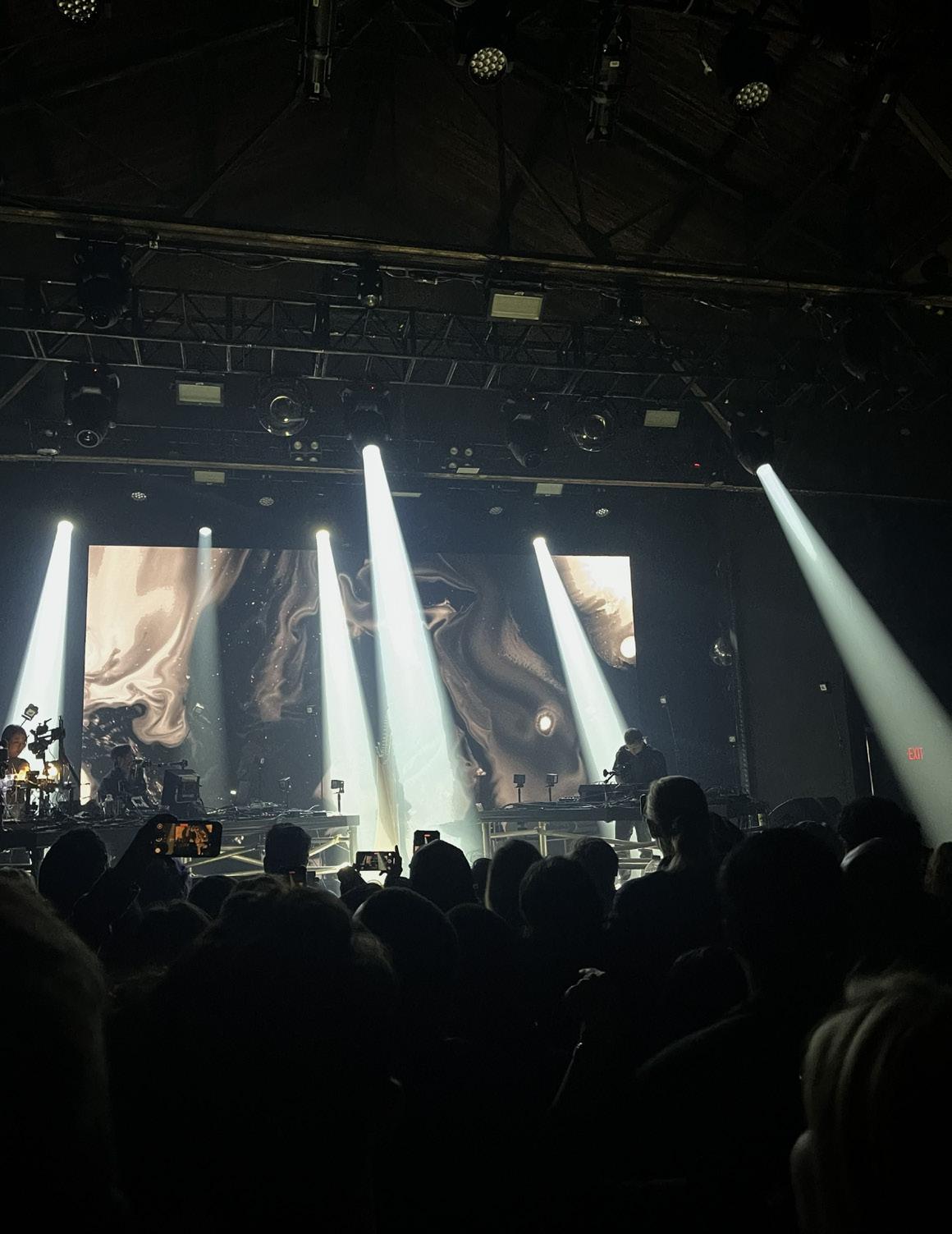
repetitive nature of the sound. I believe, though, that electronic music shares striking similarities with areas of classical music like polyphony and minimalism, where, at its best, listeners also find a sense of reverent repetition concurrently with ongoing change. Coming from a classical background—a space where I know that electronic dance music is often reduced to being a simple pattern of kicks and snares that anybody could create with ease— it is undeniable that much techno does not effectively achieve this tricky juxtaposition. But there exists, I think, a theory in which techno can find constant musical evolution simultaneously with longlasting thematic repetition. Floating Points exemplifies this better than nearly anybody in all aspects of his composition.
Like much of the philosophy of Shepherd’s music, a sustained drone did not mean a sustained, singular frequency, unchanging
The Floating Points
Photo by Charlie Kusiel King
in timbre or quality, but an ever-morphing bath of sound, very alive in temporality as no moment lasted or persisted. When the Knockdown Center was again illuminated, it was not by spotlights or overheads, but a huge screen positioned behind Shepherd and the other performers onstage, a wall of swirling, unidentifiable colors and abstract shapes: beautiful and complimentary of the music, which was now reaching more heightened intensities in volume and tempo. As with the best club music, I found myself lost in time as Shepherd’s set moved through techno, ambient and at times even quasi-classical styles, until realizing, finally, that the wall of color was reacting to the music. With every hit of the kick or rumble of the bass, the entire image shivered and bumped around. How was that possible, if the set was being played live? That is to say, how could a prerecorded video sync so well with the performance going on in that moment? I looked at the two performers on the lefthand side of the stage. What were they doing? I watched them. In flat basins, they mixed chemicals, constantly pouring in new colored liquids and swirling them around. Positioned over the two were cameras, projecting video feed of the containers onto the wall behind them. Wherein much of live electronic music lights are timed with particular sounds and perform a programmed sequence corresponding to the show, Floating Points, to my amazement, had found a way of creating entirely unique visuals live. I was stunned, though perhaps I shouldn’t have been surprised: the artwork on the cover of his 2019 studio album Crush uses the same technique. The promotional notes for the record speak to the work, created by artists at Hamill Industries: “Their vision is to create a constant dialogue between the music and the visuals…where landscapes are responsive to the music and flowers or rainbow swirls of bubbles might move and morph to the kick of the bass drum. What you see on the screen behind [Floating Points] might ‘look like a cosmos of colour going on,’ says Shepherd, ‘but it’s actually a tiny bubble with a macro lens on it being moved by frequencies by my Buchla
[synthesizer].’”1
The use of interactive visuals both for Crush and his live concert setup is typical of Floating Points’ innovative practices, which seem to get stretched and reinvented with every project Shepherd creates. Like February’s show in Queens, his studio albums traverse tremendously large musical landscapes, tying together genres and elements which are apparently worlds apart. “Falaise,” the dynamic opening track of Crush, features synthesizer, strings, woodwinds and french horn. Later on the album, “Requiem for CS70 and Strings” is as slow and introspective as any piece involving a Yamaha synthesizer can be, and a few minutes later, “LesAlpx” is a fully realized dance song. Shepherd’s 2021 Promises is perhaps his most prominent realization of this genre-melding, featuring a continuous nine-movement piece written for and performed by Floating Points, Pharoah Sanders, and the London Symphony Orchestra. Promises, recorded during the pandemic, was the result of a yearslong friendship between Shepherd and Sanders, and was ultimately the final recording of the latter’s legendary career (coincidentally, Sanders will be honored with a partial day birthday broadcast on WKCR on October 13). Floating Points’ most recent album, Cascade, released in September 2024, is a clear continuation of his exciting use of synthesis to cross sonic borders, again featuring both hard techno for clubs as well as slow, reflective work for the contemplative listener.
Tune into WKCR on October 26 from 2-7pm to hear Crush, Promises, Cascade and more of Floating Points’ incredible discography during a debut Sunday Profile for Sam Shepherd.
1 “Crush, by Floating Points.” Floating Points, floatingpoints.bandcamp.com/album/crush.
Charlie Kusiel King is Classical Department Director and a regular host of The Early Music Show, which airs on Fridays from 9:30am-12:00pm.
Cory Alessandro, Programmer: Michael Jackson’s “Thriller” (David Morales & Frankie Knuckles Def Thrill Mix)
Emma Lacy, Jazz Head: The Ink Spots’s “We’ll Meet Again,”
Preston Pressoir, Programmer: AC/DC’s “Highway to Hell”
Evangeline Cortez, Programmer: Lesley Gore’s “Sunshine, Lollipops, And Rainbows”
Sara Carson, Student Life Director: “Leo” by John Coltrane from the record Interstellar Space
Iris Wu, Programmer: “Pumpkin Attack on Mommy and Daddy” by XiuXiu. I’m a side character who dies ~40 minute mark in a slasher chase scene.
Ella Presiado, Publicity Director: “TUBTHUMPING” - Chumbawamba
Anonymous: “Ceilings” - Lizzy McAlpine (specifically the bridge)
AROUND THE STATION
Which song would play as you died in a HORRORMOVIE?
Charlie Kusiel King, Classical Head: “Never Let Me Down Again” by Depech Mode
Francisco Javier Reyes, Programmer: “YRP” by Swans
Eva Elizabeth Arroyo: “Pitch the Baby” by the Cocteau Twins (it’s the end of a really arty film)
Solène Milsap, Business Manager: “Come to Me” by Björk
Jasper Dabbs, On Air Guide Contributor: “Wichita Lineman” by Glen Campbell (bleeding out slowly as the camera pans away).
Megan Marostica: “The Air That I Breathe” by The Hollies slowly panning away until meeting my death.
Anonymous: “Drift Away” - Uncle Kracker. My limp body is dumped into a body of water by my killer & the camera pans up to the sunset as my body floats into the horizon.
Caroline Nieto: “(Don't Fear) The Reaper” - Blue Öyster Cult

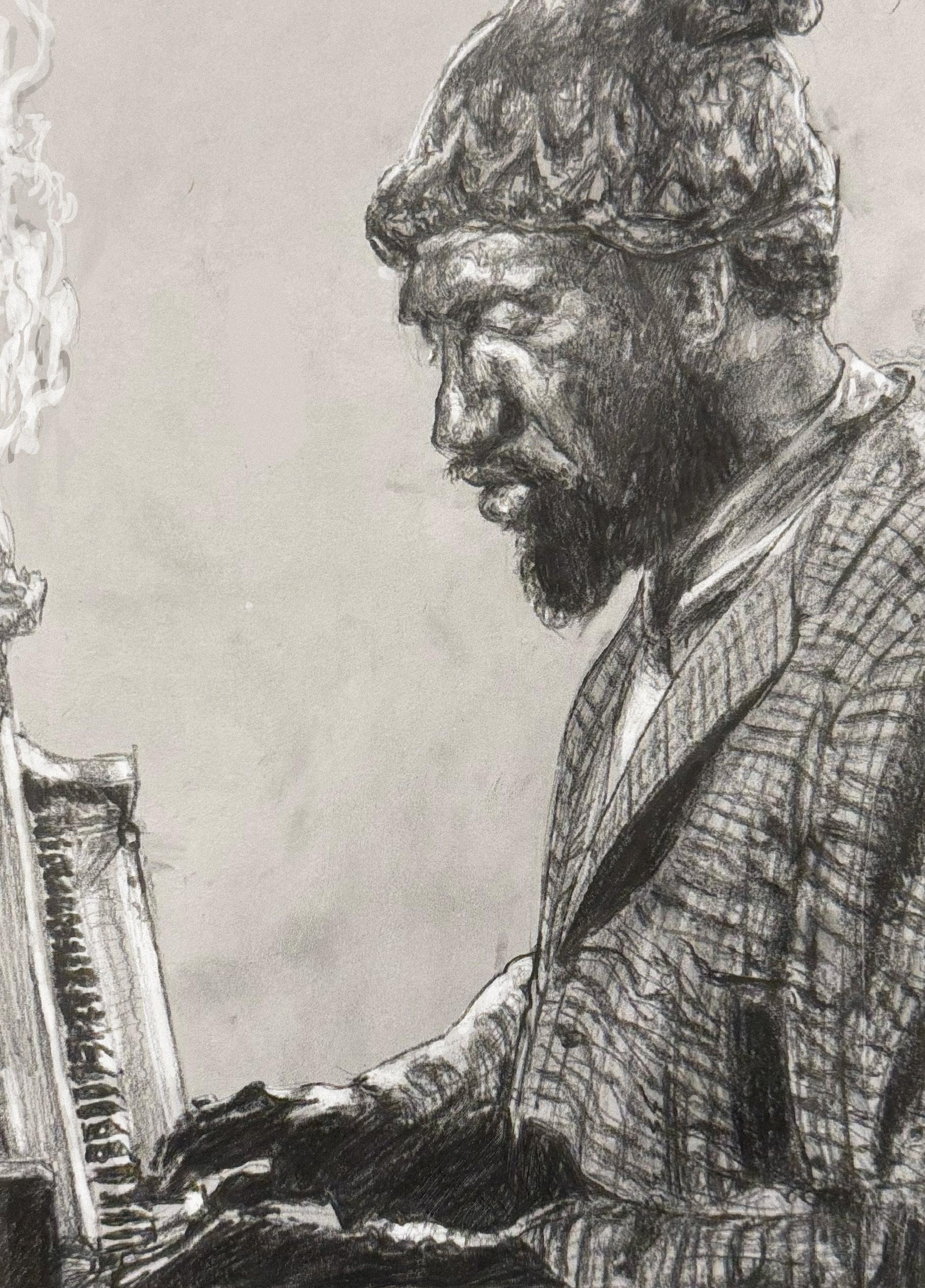
Illustration of Thelonious Monk by Jonah Stockwell
SUPPORT WKCR
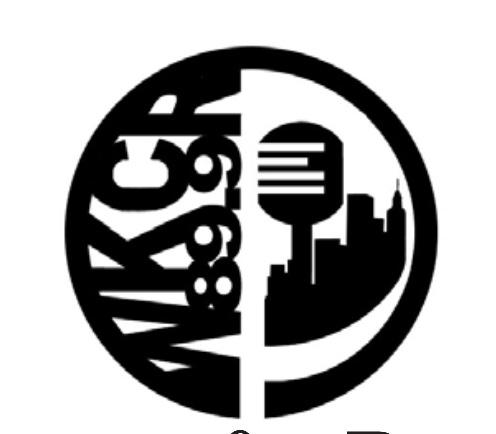
TOP 5 REASONS TO DONATE TO WKCR
1. You’d be helping a student-run, listener-funded, and volunteer-based radio station continue to bring you the absolute best in what radio has to offer. Music, arts, news, and sports— we’ve got the works!
2. You wouldn’t be a free-rider anymore.
3. WKCR donations are tax-deductible (so make sure you donate before tax season). For more info on that, or anything else business-related, email business@wkcr.org
4. Being “the Original FM,” our equipment is getting a bit old. Thanks to your 2023 donations, we were able to retire Buzz, the hamster that ran the wheel powering us. But our new hamster, Roach, needs to start saving for retirement... can you blame him?
5. Isn’t OnAir cool? Without proper funding, projects like this can’t come to fruition and, if they do, don’t make it very long. Donate to allow the little OnAir minions to stay in the job (we are all OnAir minions).
HOW TO DONATE TO WKCR IN 4 STEPS
BY MAIL
Step 1: Locate your nearest checkbook
Step 2: Indicate “WKCR” as payee and fill out as usual
Step 3: Mail check to CU Gift Systems, 622 West 113th Street, MC 4524, New York, NY 10025
Step 4: ...and VOILÀ! Just like that, you have become a WKCR supporter!
WKCR also accepts checks to our direct address. Just follow the same steps listed above but mail the check to: 2920 Broadway, New York, NY 10027
ONLINE
Step 1: head to www.wkcr.org
Step 2: Click the yellow “DONATE TO WKCR” banner at the top of the page
Step 3: Fill out the form in the giving portal and enter your information...
Step 4: ...and VOILÀ! Just like that, you have become a WKCR supporter! Did you know you can make recurring donations to WKCR when you donate online?
Just indicate your frequency preferences on the giving portal when prompted!
On Air 's editorial board is McCartney Garb, Ella Werstler, Jem Hanan, & Olivia Callanan
The editorial team for this issue was Charlie Kusiel King, Emma Lacey, Evangeline Cortez, Jasper Dabbs, Jonah Stockwell, Katherine Speer, & Maya Phillips
Special thanks to Caroline Nieto, Corey Alessandro, Ella Presiado,Eva Elizabeth Arroyo, Francisco Javier Reyes, Iris Wu, Megan Marostica, Preston Pressoir, Sara Carson, & S olène Millsap
